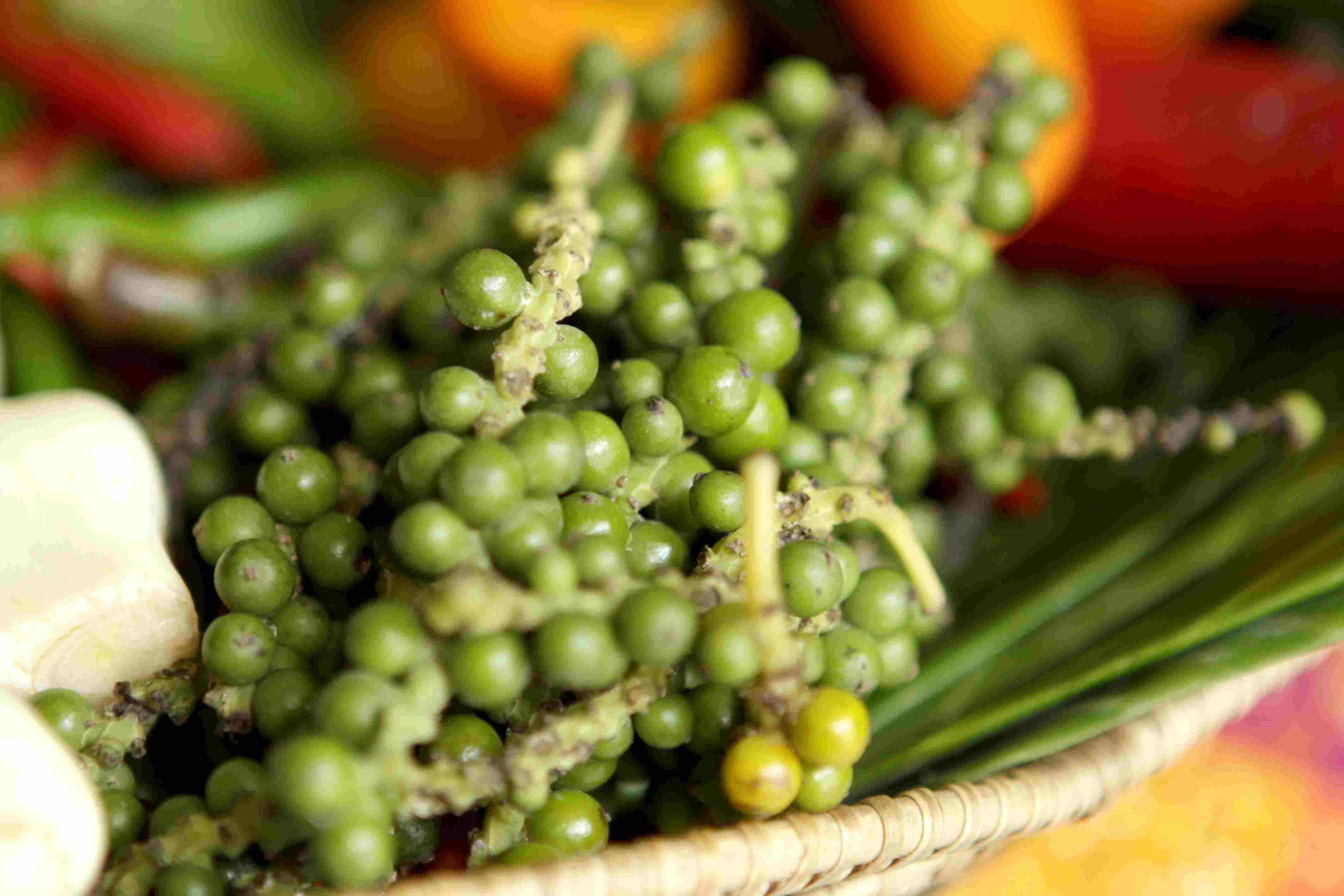
The original meaning of peppercorn is the fruit of Black pepper. The fruit, known as a peppercorn when dried, is a small drupe approximately five millimetres in diameter, dark red when fully mature, containing a single seed. Peppercorns, and the powdered pepper derived from grinding them, may be described as black pepper, white pepper, green pepper, and very often simply pepper. The word pepper is ultimately derived from the Sanskrit pippali, the word for long pepper via the Latin piper which was used by the Romans to refer both to pepper and long pepper, as the Romans erroneously believed that both of these spices were derived from the same plant.
Peppercorn is a spice that has been used for thousands of years and is one of the most popular spices in the world today. This spice has a unique and pungent taste that sets it apart from other spices, making it an essential ingredient in many dishes. Peppercorn is a versatile spice, and it can be used in savory and sweet dishes, making it an essential addition to any kitchen.
Peppercorn is the fruit of the Piperaceae family, which includes other plants such as Piper nigrum and Piper longum. The peppercorn plant is native to the forests of India, and it is widely cultivated in other regions such as Indonesia, Vietnam, and Brazil. Peppercorn has been used in traditional medicine for thousands of years as it has many health benefits such as improving digestion, reducing inflammation, and improving cognitive function.
Peppercorn comes in three main varieties, namely black, white, and green. Black peppercorn is the most common type of peppercorn and is made from the unripe fruit that is picked and dried. White peppercorn is made by removing the outer layer of the ripe fruit, leaving only the inner seed. Green peppercorn, on the other hand, is made from the unripe fruit that is pickled or brined.
Black peppercorn is the most commonly used type of peppercorn and is used in various culinary dishes. Black peppercorn has a strong, pungent flavor due to the presence of the chemical compound piperine. It is used in marinades, rubs, and sauces, and it is also added to soups, stews, and curries to enhance the flavor.
White peppercorn, on the other hand, has a milder flavor than black peppercorn due to the absence of the outer layer. It is used in dishes where a strong flavor is not desired, such as in white sauces or mashed potatoes, or in dishes where the black color of black peppercorn is not desired, such as in light-colored soups or stews.
Green peppercorn has a slightly sweeter taste than black peppercorn, and it is commonly used for pickling or brining. It is also used in salads or as a garnish for meat dishes to add flavor and texture.
Peppercorn is not only used for its culinary purposes; it is also used for its medicinal properties. The piperine in black peppercorn has been found to improve digestion by increasing the secretion of digestive juices. It is also thought to reduce inflammation and pain by inhibiting the production of prostaglandins, which are responsible for inflammation in the body.
Peppercorn is also rich in antioxidants, which can help protect the body from free radicals that damage cells. Antioxidants can also help reduce the risk of chronic diseases such as cancer and heart disease.
Peppercorn has also been found to improve cognitive function by increasing blood flow to the brain. This increase in blood flow can help improve memory and concentration, making it an essential ingredient for students or professionals who need to focus.
Aside from its culinary and medicinal uses, peppercorn has played a significant role in history and culture. It was used as currency in ancient times, and it was often used to pay tribute to rulers. It was also used in religious ceremonies, and it was believed to have mystical powers.
Peppercorn has also been used in traditional Ayurvedic medicine in India for thousands of years. It was used to treat a wide range of ailments such as constipation, diarrhea, and indigestion. It was also believed to have aphrodisiac properties and was used to treat impotence.
In Western culture, peppercorn has been used since the Middle Ages, and it became a popular spice during the Renaissance. In the 16th century, it was highly prized in Europe, and it was often used as a status symbol by wealthy individuals.
Today, peppercorn is widely used in various dishes worldwide, and it is an essential ingredient in many cuisines such as Indian, Chinese, and Italian. It adds a unique flavor and aroma to dishes and is a staple in many kitchens.
Peppercorn is a versatile and essential spice that has many culinary and medicinal uses. It is an important ingredient in many dishes, and it adds a unique flavor and aroma to food. It has played a significant role in history and culture, and it continues to be an essential part of many cuisines worldwide. Whether you are a chef or a home cook, peppercorn is an essential spice to have in your kitchen.